Great teams make sure they are climbing the right mountain effectively. Other teams sometimes spend their time trying to climb the wrong mountain more efficiently.
The same principles can apply to individuals. Some people are extremely effective and then add efficiency. Some are efficient but turn out not to be effective.
Effectiveness Plus
Efficiency in The Past
Looking back at your own work, can you think a team that was highly effective? What did they do right then? What were the principles they followed?
Great teams start by being effective in their goal setting. They clarify the real ‘What’ before moving on to the ‘How’. They ask questions such as: “What are the real results we want to achieve? What is the picture of success?”
They then focus on pursuing effective strategies. They ask: “What are the key strategies we can follow to give ourselves the greatest chance of success?” After establishing the strategies, they focus on how they can implement these efficiently.
Some teams shower their people with instructions to be more efficient. People are urged to work smarter and reduce inefficiencies. Such ideas may certainly be worthwhile. But it is important to make sure people are climbing the right mountain.
Many institutions focus on goals that were relevant years ago. People can make the processes more efficient, but this will not help. The institution needs to work towards more relevant goals to thrive in the modern world.
If you wish, try tackling the exercise on this theme. This invites you to do the following things.
Looking back on your work, can you think of a team that was both effective and efficient? If you feel it is more relevant, you may want to think of a person who embodied these qualities. What do you think the team – or person – did right to follow these principles?
Effectiveness Plus
Efficiency in The Future
Let’s assume that you work in a team. You may be the leader or a team member. Looking to the future, how do you think the team can be more effective? You can also ask the same questions about yourself as an individual.
If you are looking at a team, you may want to consider the practical things it can do:
To be effective in its goal setting by focusing on the real results it wants to achieve and defining its picture of success.
To be effective in clarifying the key strategies it can follow to achieve the goals.
To be effective by making sure it has the right people in the right places and helps them to implement the strategies in the right way.
To be effective in the many aspects of building a positive culture – such as recruitment, interviewing, induction, encouraging people to use their strengths, providing great customer service, simplifying processes and other aspects of running a team.
To be effective in continuing to develop the team and ensuring it achieves ongoing success.
There are many ways to explore these themes. One approach when working with organisations is to ask:
“If you were starting this organisation again with a blank piece of paper, what would you do?
“What would be your goals? What would you do to organise your resources to achieve these goals? What would you do to ensure you gave yourselves the greatest chance of success?”
Developing By
Building A New House
There are many ways to develop an organisation. Sometimes the different approaches can be likened to building a house.
Renovating the old house
Some people try to renovate an old house – the old way of working or doing business. This sounds logical, but it can be challenging.
Sometimes changing a system meets resistance. Too much time can be spent trying to persuade people, rather than delivering the required results.
It is possible to renovate an old house. But this can be an arduous process. It is vital to implement the right strategy with the right people in the right way. This can call for many tough decisions along the way.
Building a new house that
is connected to the old house
This is an approach used by many people who want to help an organisation to develop. They may aim to introduce a new way of delivering customer service, doing business or whatever.
They build a new house – a new way of doing things – that has a long connecting corridor to the existing parts of the organisation. The new method may differ radically from the previous approach, so they need distance from the old house.
People maintain the old house – the old way of working – until the new house has proved successful. The new house then takes over and becomes the new way of working.
Building a new house in a new place
Some people build a new house in a new place. They create a new way of working in a new market. This can be rewarding, but it can also be risky.
In this article we are exploring building a new house that may be connected to the old house. People often take the following steps towards making this happen.
They get a clear picture of success and a clear mandate from the decision makers.
They clarify what had worked best in the organisation and show respect for its heritage.
They connect the new approach to the existing organisation by creating some kind of ‘corridor’ – but they develop the new approach separately.
They do not go back to the old house to sit in committees and ask if it is okay to paint the walls a certain colour.
They build the new house, do superb work and deliver success.
They hand-over the new approach to people who they have coached to run it successfully.
There are many ways to focus on effectiveness and then efficiency. If you wish, try tackling the exercise on this theme. This invites you to do the following things.
Describe a specific example where you would like to focus on effectiveness plus efficiency to deliver success.
Describe the specific things you can do to focus on effectiveness plus efficiency.
Describe the specific benefits of doing these things.


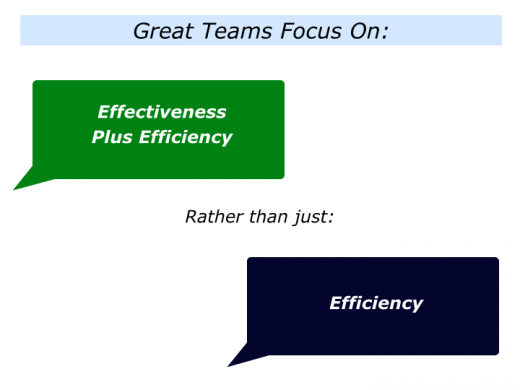
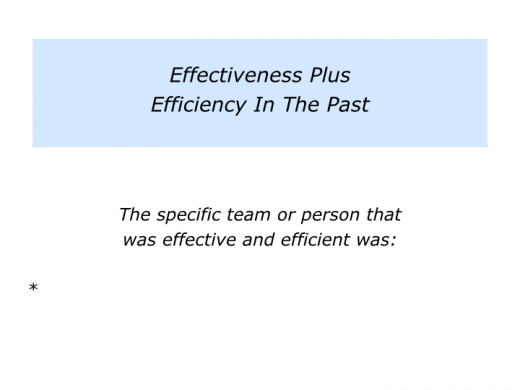
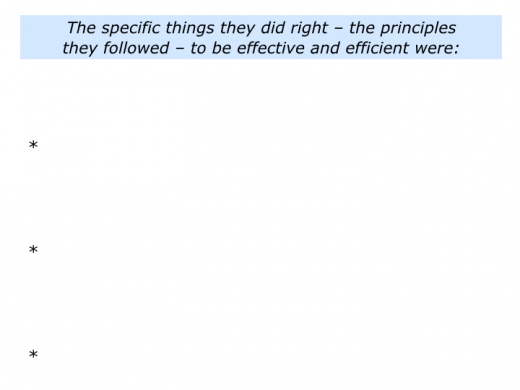
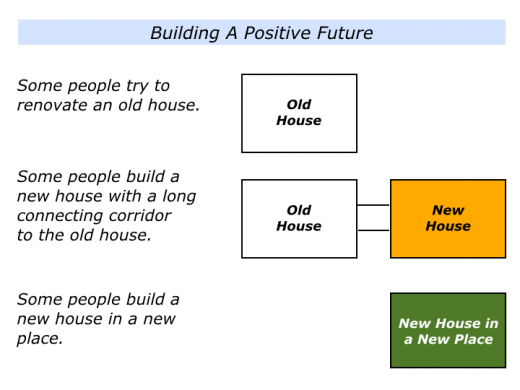
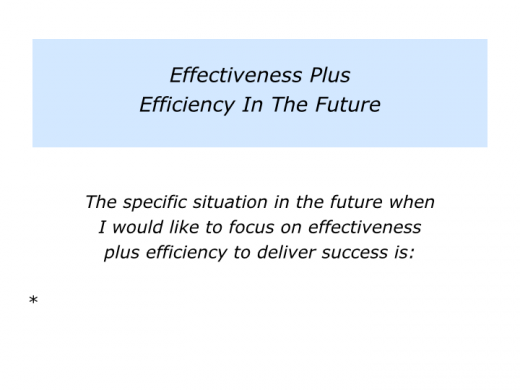
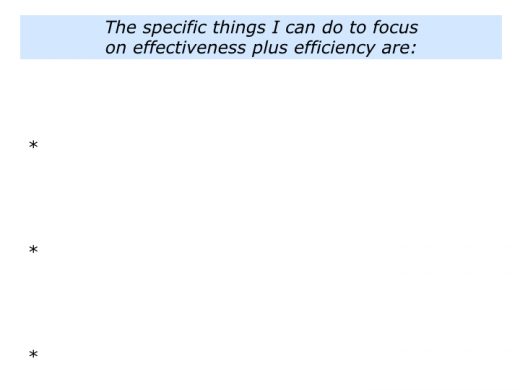
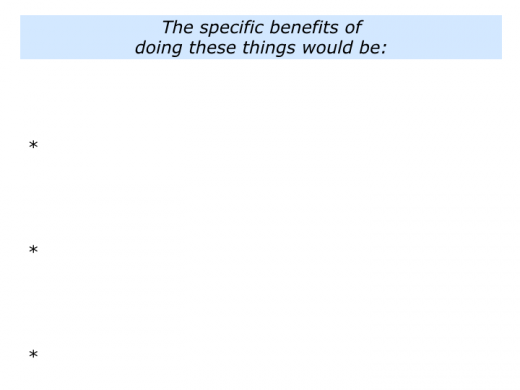




Leave a Reply